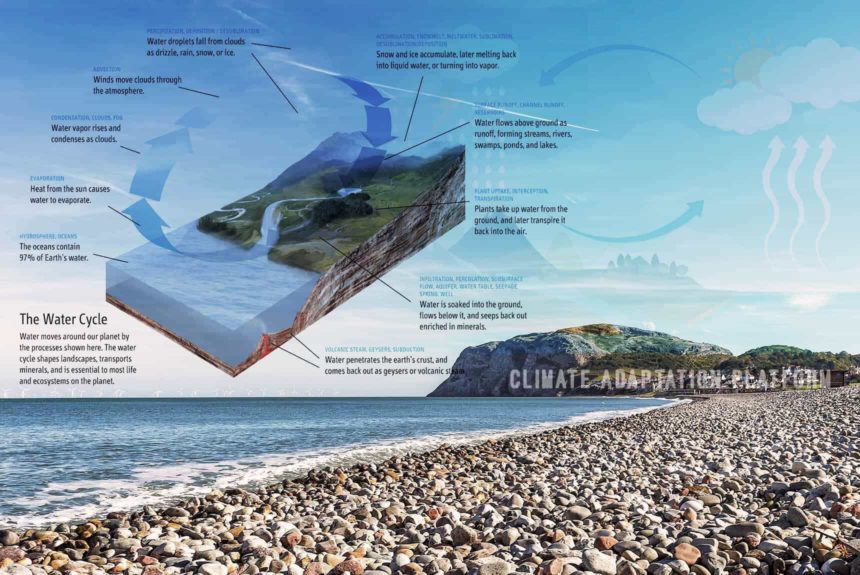The water cycle is connected to the Earth’s energy and carbon budgets through evaporation, precipitation, and water available for the ecosystems.
Water vapour plays a vital role in the planetary energy balance in the atmosphere by absorbing and re-emitting longwave radiation and transporting energy poleward to colder regions.
Uncertainties on how water moves through the atmosphere limit ability to diagnose water cycle variations and their relationship to climate change.
According to the 2021 study, “Enhancing Understanding of the Hydrological Cycle via Pairing of Process-Oriented and Isotope Ratio Tracers”, researchers from the universities in the United States and New Zealand conducted:
“The hydrologic cycle couples the Earth’s energy and carbon budgets through evaporation, moisture transport, and precipitation. Despite a wealth of observations and models, fundamental limitations remain in our capacity to deduce even the most basic properties of the hydrological cycle, including the spatial pattern of the residence time (RT) of water in the atmosphere and the mean distance travelled from evaporation sources to precipitation sinks. Meanwhile, geochemical tracers such as stable water isotope ratios provide a tool to probe hydrological processes, yet their interpretation remains equivocal despite several decades of use. As a result, there is a need for new mechanistic tools that link variations in water isotope ratios to underlying hydrological processes.”
The study presents a new suite of “process-oriented tags,” which they use to explicitly trace hydrological processes within the isotopically enabled Community Atmosphere Model, version 6 (iCAM6).
Researchers use a comprehensive set of numerical tracers to explain the water cycle process in the atmosphere from source to sink.
In the context of water isotope ratios, these numerical tracers provide a method to explicitly test hypotheses of how variations in water isotope ratios map to underlying hydrological processes.
The new tracers that the study outline shows a fuller understanding of the hydrologic cycle and allow new ways to test model parameterizations and understand the processes governing hydrologic change.
Click the link provided in the “Source” below.
Source:
Fiorella, R. P., Siler, N., Nusbaumer, J., & Noone, D. C. (2021). Enhancing understanding of the hydrological cycle via pairing of process-oriented and isotope ratio tracers. Journal of Advances in Modeling Earth Systems, 13, e2021MS002648. https://doi.org/10.1029/2021MS002648



Leave a Reply